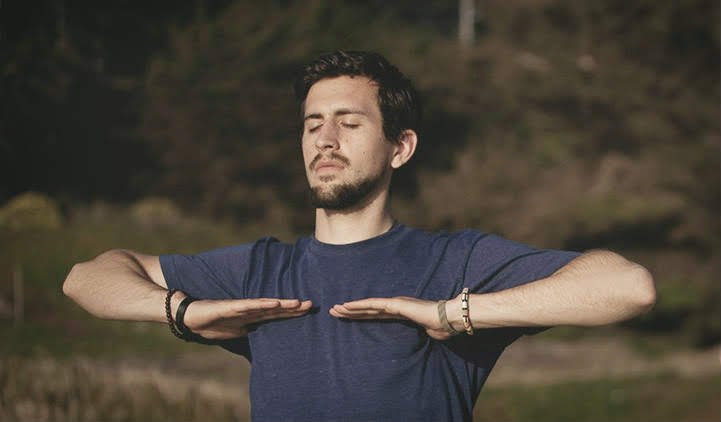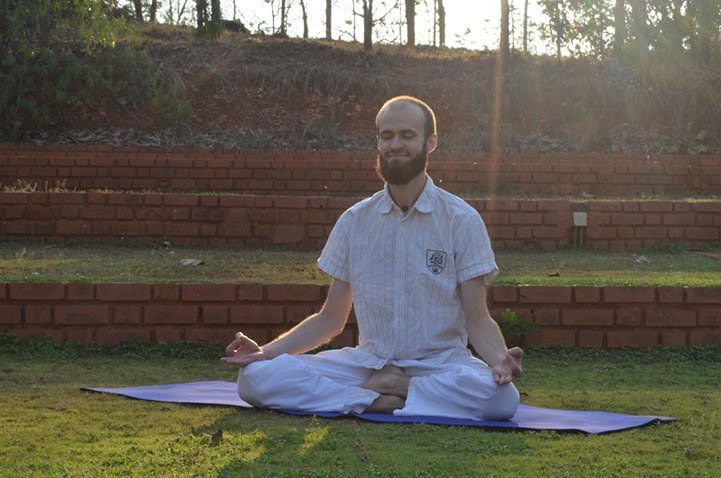
Beginners Guide
Discover practical tips and techniques to start your meditation journey and cultivate inner peace. Read the guide to begin your transformation today.
Here’s something interesting: just 12 minutes of meditation, 5 days a week, can help protect and boost your attention span.
This meditation guide won’t turn you into a Zen master overnight, nor will it require you to sit cross-legged for hours. Research shows that people who meditate regularly can significantly reduce their stress levels. They feel calmer and more relaxed as they go about their day.
Starting meditation is easier than you’d think, even if you’ve never tried it before. Start with just a few minutes a day for a week. Add two more minutes when you feel ready, and keep building from there. You’ll be amazed – this simple approach will have you meditating for 10 minutes daily by your second month!
Let us guide you through some easy and practical steps to establish an eco-friendly meditation routine. Your mind might race constantly (don’t worry – everyone does!), and your schedule might be packed. This piece will help you experience the life-changing benefits of meditation without feeling overwhelmed.

Meditation trains your mind to focus and redirect thoughts. It creates mental clarity and emotional stability. This practice started thousands of years ago in Eastern traditions and has become accessible to more people as a technique to boost overall well-being.
Meditation helps you become more aware of yourself and your surroundings. Many people think meditation means emptying their minds completely. The truth is it teaches you to observe thoughts without judgment and redirect your attention.
Think of meditation as a gym for your mind. We exercise our bodies to stay fit, and meditation strengthens our “mindfulness muscle.” You’ll learn to spot your thought patterns. This is an opportunity to step back from the constant stream of thoughts running through your mind.
People who meditate regularly see their stress markers, such as cortisol and heart rate, decrease. These changes affect everything from sleep to blood pressure. Brain scans using EEG and fMRI show that meditation changes brain structure. Meditators have denser brain tissue in areas that handle sensory input, concentration, and emotional processing.
Regular meditation practice brings benefits that go way beyond relaxation. Research shows these positive effects:
The benefits don’t stop when your session ends. That sense of calm and balance stays with you all day, helping you handle stressful situations better.
The biggest myth about meditation is that you need to silence your thoughts completely. The truth? Thoughts will come and go – that’s normal.
Meditation teachers often hear, “I can’t meditate because my mind is too busy.” A busy mind is exactly why meditation exists. You’re not trying to stop thoughts – you’re learning to change how you relate to them through awareness.
Your mind will wander during meditation – that’s perfectly normal. Even experienced meditators get distracted. The difference lies in how you respond. Stay curious instead of critical. When your attention drifts (and it will), just notice and bring it back to your focus point.
You don’t need special equipment, expensive memberships, or complete silence to meditate. Practice while lying down, walking, or in any comfortable position. Beginners can use guided meditations for structure, and starting with a few minutes each day works fine.
Research shows that consistency matters more than the duration of meditation. Start with 2-3 minutes daily and build up as you get comfortable. Soon, you’ll find that your busy mind, once seen as an obstacle, becomes your best teacher in the practice.

Breathing opens the simplest yet most powerful path to meditation. Your breath is a vital practice that brings quick benefits without needing any special gear or experience.
You can start meditating by just paying attention to your breath. The first step is to find a quiet spot where you can spend 5-10 minutes alone. This allows you to reconnect with your natural breathing rhythm without forcing any changes.
Your breath is present in various parts of your body. You might notice it in your:
Here’s a simple way to start breathing meditation:
Stay patient with yourself. Your mind will drift – it happens to everyone, especially when starting out. Just notice when your thoughts wander without getting frustrated and bring your attention back to your breath.
Studies show that focusing on your breath during meditation can sharpen your mind. Recent research has linked this practice to improved attention and brain health.
Guided meditations help newcomers find their way. A 10-minute session hits the sweet spot – long enough to feel the benefits but short enough to fit into your day.
Here’s how to start your first guided practice:
Counting breaths helps many people stay focused at first. You can count each breath: “In (one), out (two), in (three)…”. This simple trick provides your mind with a solid focus point, helping to redirect your attention away from random thoughts.
Making meditation a regular habit is most effective. You might start with 10 minutes each morning and evening, then gradually work up to 20 or 30 minutes as you feel comfortable.
A comfortable position makes all the difference in meditation. You don’t need to sit cross-legged or in a lotus position to meditate well.
If you’re using a chair:
If you’re on the floor:
Your body’s alignment matters, whatever position you choose. Stack your head above your heart and your heart above your hips. This setup helps you stay alert while staying relaxed.
Comfort is the golden rule of meditation posture. If sitting straight causes discomfort, use cushions or lean against a wall for support. The goal is to feel comfortable enough to focus on meditating rather than physical discomfort.
Stick with it, and you’ll find meditation gets easier. Just like any skill, your focus and relaxation will improve with practice.

The right resources can transform your meditation experience. Today’s market has countless options, but a well-chosen set of beginner-friendly materials will help you build a steady practice without feeling lost.
A structured approach creates a solid foundation for meditation newcomers. You’ll find many free resources that teach you simple concepts and techniques. UCLA’s Mindful Awareness Research Center offers downloadable guided meditations that serve as a great starting point. Mindful.org also offers free 5-day meditation guides sent directly to your inbox, featuring valuable insights and guided practices. Sattva, the world’s number one free meditation app, gives thousands of guided meditations, sound baths, and breathing exercises.
See below for information on another app for beginners, the Art of Living Journey app.
Your beginner resources should have these features:
A quality beginner’s guide teaches proper posture, breathing techniques, and strategies for managing thoughts and emotions during practice. These foundations help you establish a lasting practice.
Ten-minute sessions work perfectly for beginners. They’re long enough to benefit you but short enough to fit into your day. Research shows that even brief daily practice can significantly reduce stress levels.
Starting your 10-minute sessions:
Apps like Headspace and Calm offer guided 10-minute sessions perfect for beginners. The free Healthy Minds Program provides user-friendly, goal-driven content to help you track your progress.
Once you’re comfortable with simple meditation, trying various techniques helps you find what appeals to your style and goals. Most meditation styles fit these categories:
Breathing meditations: Your breath becomes an anchor for attention, which naturally calms your nervous system. The 4-7-8 breathing technique works like a natural tranquilizer – breathe in for 4 seconds, hold for 7, and exhale for 8.
Mindfulness meditation: This practice keeps you present without judgment. Research indicates that this approach helps you better understand your thoughts, feelings, and sensations.
Body scan: This technique moves through your body step by step, from toes to head. You’ll develop better body awareness and release physical tension.
Walking meditation: This works well if sitting still poses a challenge for you. You walk slowly, staying aware of each step and body sensation.
Progressive muscle relaxation: You tense and release muscle groups throughout your body. This helps reduce stress before bedtime.
Try different techniques instead of forcing one that doesn’t suit you. As meditation teacher Sharon Salzberg says, “The most important moment in your meditation practice is the moment you sit down to do it.”

Many practitioners seek structured guidance to deepen their experience after beginning a simple meditation practice. A formal program gives detailed instructions and customized guidance that you might miss with self-guided practices.
The Art of Living Part 1 Course provides a well-structured introduction to powerful breathing techniques that have helped millions worldwide. This online workshop teaches Sudarshan Kriya™, also known as SKY Breath Meditation, a rhythmic breathing technique practiced by over 45 million people globally.
This three-day workshop teaches techniques that can boost immunity, remove stress, improve relationships, and help you live with greater joy and purpose. Beginners gain confidence under expert guidance as they learn proper techniques through the workshop structure.
The ongoing support makes this workshop especially valuable for beginners. You get free lifetime access to follow-up sessions and connections to a global community of mentors who can answer questions as your practice grows. Their continued guidance helps you stay consistent, often the biggest challenge when you’re new to meditation.
Sudarshan Kriya is a powerful rhythmic breathing technique that helps the body and mind work in harmony. “Sudarshan” means “proper vision” or “right perception,” while “Kriya” means “action.” Together, they represent an action that helps you gain clarity and peace.
Gurudev Sri Sri Ravi Shankar discovered this technique in 1981 after a ten-day period of silence and fasting. He explains: “The breath connects the body and mind. For every emotion, there is a corresponding rhythm in the breath”. You can influence your mental and emotional states by changing your breathing patterns.
The breathing meditation practice has several distinct components:
Scientific research proves the benefits of regular practice. Studies show it can:
The Art of Living Part 1 Course is a comprehensive, three-day program that incorporates Sudarshan Kriya and additional wellness practices. Participants experience relaxing yet focused sessions designed to provide lasting benefits.
These three days give you the following:
You’ll learn a simple daily home practice to continue independently. Research shows that regular practitioners experience a 37% increase in calmness within four weeks, a 23% reduction in anxiety within six weeks, and a 25% increase in social connection within the same period.
The program typically runs 18-20 hours across 5-6 days. Beyond breathing techniques, it teaches you how to handle challenging emotions, relationships, and situations effectively. This approach helps with immediate stress relief and long-term emotional resilience.
Structured programs are a great way to get something that self-guided practice often misses: expert feedback, community support, and a progressive learning path. Trained instructors who can answer questions and refine your technique help you build a lasting meditation habit as your practice grows.

Technology makes meditation easier than ever. Modern meditation apps help you establish and maintain a regular practice that becomes an integral part of your daily routine.
The Art of Living Journey app shines with its meditation programs which works hand in hand with live online courses such as Art of Living Part 1, Sahaj Samadhi Meditation™, and Art of Living Part 2. Students can build on their original course experience through this seamless integration.
The app provides access to guided SKY practice sessions and a comprehensive library of meditations led by Gurudev Sri Sri Ravi Shankar and expert instructors. Digital membership will give a strong foundation to your practice each day, with the right mix of structure and flexibility that new practitioners need.
New meditators often struggle to practice regularly. Most meditation apps solve this with customizable reminder systems that alert you when it’s time to meditate. These gentle prompts help you establish a routine until meditation becomes a natural habit.
The Journey app’s library contains hundreds of guided meditations and breathwork exercises. You can pick meditations based on the following:
This variety means you’ll find something that works, regardless of your mood or schedule.
Visual progress tracking can significantly boost your motivation. Most meditation apps track:
These tools keep you accountable and show real proof of your dedication. The Journey app rewards your progress with colorful badges when you hit streak goals.
The tracking feature also helps you spot patterns in your practice—you might notice you meditate more on certain days or connect better with specific techniques. This insight enables you to fine-tune your routine for optimal results.

Meditation runs on shared experiences. Solo practice is great, but group sessions add a powerful dimension to your meditation trip, where collective energy improves personal development.
Many venues provide no-cost meditation gatherings for beginners. Mind Oasis Meditation Center hosts free community sessions with guided meditations, discussions, and a 5-Day Meditation Challenge. These introductory sessions create a welcoming space for anyone curious about meditation, without any financial strings attached. The Art of Living Foundation also offers intro talks, meetups, group meditations, and other community events.
Currently, many centers offer both in-person and virtual options. Online gathering participants feel connected despite physical distance and say it’s “incredible to feel the presence of students across the planet, live, in real-time.” This flexibility makes meditation available, whatever your location or physical limitations.
Community spaces, places of worship, and local organizations often host free meditation classes designed for newcomers. These sessions typically run 60-90 minutes and combine simple instruction with group practice.
Group practice offers clear advantages over solo meditation:
Research shows partner meditation strengthens feelings of closeness and encourages self-disclosure. Groups can also reduce loneliness and related health issues like heart disease and poor cognitive function.
Finding meditation communities has become easier lately. The Meetup platform connects people interested in local or virtual meditation groups. A quick search reveals numerous options in most areas, with groups welcoming participants of all experience levels.
Additionally, consider checking community centers, yoga studios, and fitness facilities that now offer meditation classes. Online meditation communities, such as Meditation Chapel, host over 150 groups that meet weekly in all time zones.
Note that group practice doesn’t need formality. One expert puts it well: “There’s nothing fancy or formal required to be in a meditation group. It’s possible to simply gather friends together and create your own experience”.

Q1. How can I start meditating as a complete beginner? Start with just 2 minutes a day for a week, focusing on your breath. Sit comfortably, close your eyes, and pay attention to your natural breathing. When your mind wanders, gently bring your focus back to your breath. Gradually increase your meditation time as you become more comfortable with the practice.
Q2. What are some simple meditation techniques for beginners? Some beginner-friendly techniques include breathing meditation (focusing on your breath), body scan (progressively relaxing each part of your body), and walking meditation (being mindful of each step). You can also try guided meditations using apps or online resources to help structure your practice.
Q3. How often should I meditate to see the benefits? Consistency is key. Aim to meditate daily, even if it’s just for a few minutes. Regular practice, even for short periods, is more beneficial than longer but infrequent sessions. As you build the habit, you can gradually increase the duration of your meditation sessions.
Q4. Can meditation help with stress and anxiety? Yes, regular meditation practice has been shown to reduce stress and anxiety levels. It helps calm the mind, regulate emotions, and improve overall well-being. Even short daily sessions can lead to noticeable improvements in stress management and emotional balance over time.
Q5. Is it normal for my mind to wander during meditation? Absolutely. Mind-wandering is a normal part of meditation, especially for beginners. The key is to notice when your mind has wandered without judgment and gently bring your attention back to your point of focus, such as your breath. This process of noticing and returning is the essence of meditation practice.

Starting a meditation practice needs nothing more than being willing to begin. This piece shows how meditation helps reduce stress, improve focus, and support emotional well-being. These benefits come from scientific research rather than mystical claims.
Note that a simple two-minute breath awareness exercise can start your trip. A busy mind isn’t a problem – it’s actually the perfect reason to start meditating. The wide range of techniques available means you’ll find an approach that appeals to your priorities and lifestyle.
Well-structured programs like the Art of Living Part 1 Course can significantly enhance your progress. These programs teach powerful techniques such as Sudarshan Kriya™, aka SKY. The combination of these practices with meditation apps and community sessions creates a foundation that transforms your practice.
Meditation doesn’t demand perfection – it thrives on consistency. Each time you notice your wandering mind and bring it back, you build mental strength. This simple return to awareness is the core practice of meditation.
You should start today, even with just two minutes. Without a doubt, your practice will deepen, and the benefits will grow. Your meditation trip might start as a personal wellness tool, but many people discover it becomes something more meaningful – a path to greater joy, clarity, and purpose in daily life.

Beginning meditation can feel confusing, but it doesn’t have to be. The Art of Living Part 1 Course is the perfect place to start, guiding you step by step through powerful techniques, including Sudarshan Kriya, a transformative breathing practice that anyone can learn.
You’ll gain practical tools, personal guidance, and the confidence to build a sustainable practice that actually works for your mind, your body, and your life.
🌟 No experience needed—just a willingness to begin.
Take the first step toward more calm, clarity, and joy.
👉 Join the next course and let your breath lead the way.












